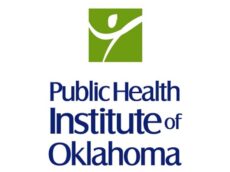
Are you a system-driven collaborator, cautious collaborator or competent isolationist?
These terms came from the discussion of a qualitative study of primary care and public health collaboration and are one of MANY insights contained within the recently published Policy Brief, How to enhance the integration of primary care and public health? Approaches, facilitating factors and policy options by Bernd Rechel. Click the title to download or find it at http://www.euro.who.int/en/about-us/partners/observatory/publications/policy-briefs-and-summaries/how-to-enhance-the-integration-of-primary-care-and-public-health-approaches,-facilitating-factors-and-policy-options-2020
Five strategies to enhance public health and primary care collaboration are discussed in depth with examples. The strategies are:
1) Coordinating health care services for individuals
2) Applying a population perspective to clinical practice
3) Identifying and addressing community health problems
4) Strengthening health promotion and disease prevention
5) Collaborating around policy, training and research.

A few highlights:
- Sometimes a shift in perspective can open the door to a more honest conversation about working together. Here’s something to consider: Both primary care and public health tend to have limited resources in terms of funding and time, which can make integration an additional burden rather than an opportunity (Koo et al., 2012)
- We know we should be working toward systems of enhanced data sharing and this brief provides examples of how this can be achieved. For example, jointly conducted community health assessments, using electronic health records from clinical encounters to build community databases and using clinical opportunities to screen for social needs. Make sure to read about how a Liverpool program called “Advice on Prescription” provides referrals to appropriate community organizations. And for another resource, check out the Neighborhood Navigator, an interactive tool provided by the American Academy of Family Physicians (AAFP) to screen patients to identify social needs and help address health equity.
- The review of a stepwise approach to collaboration in the Netherlands (Storm et al., 2015) resembles the approach of many Oklahoma CHIO activities. The stepwise approach in the Netherlands involved 1) Getting to know the neighborhood 2) Assembling the working group 3) Analyzing the neighborhood 4) Developing a district health profile 5) Preparing policy dialogues 6) Holding local dialogues 7) Embedding integrated district plans and collaboration.
Do you recognize any of this in your own community? Join the conversation by commenting below and don’t forget to download this valuable resource.
